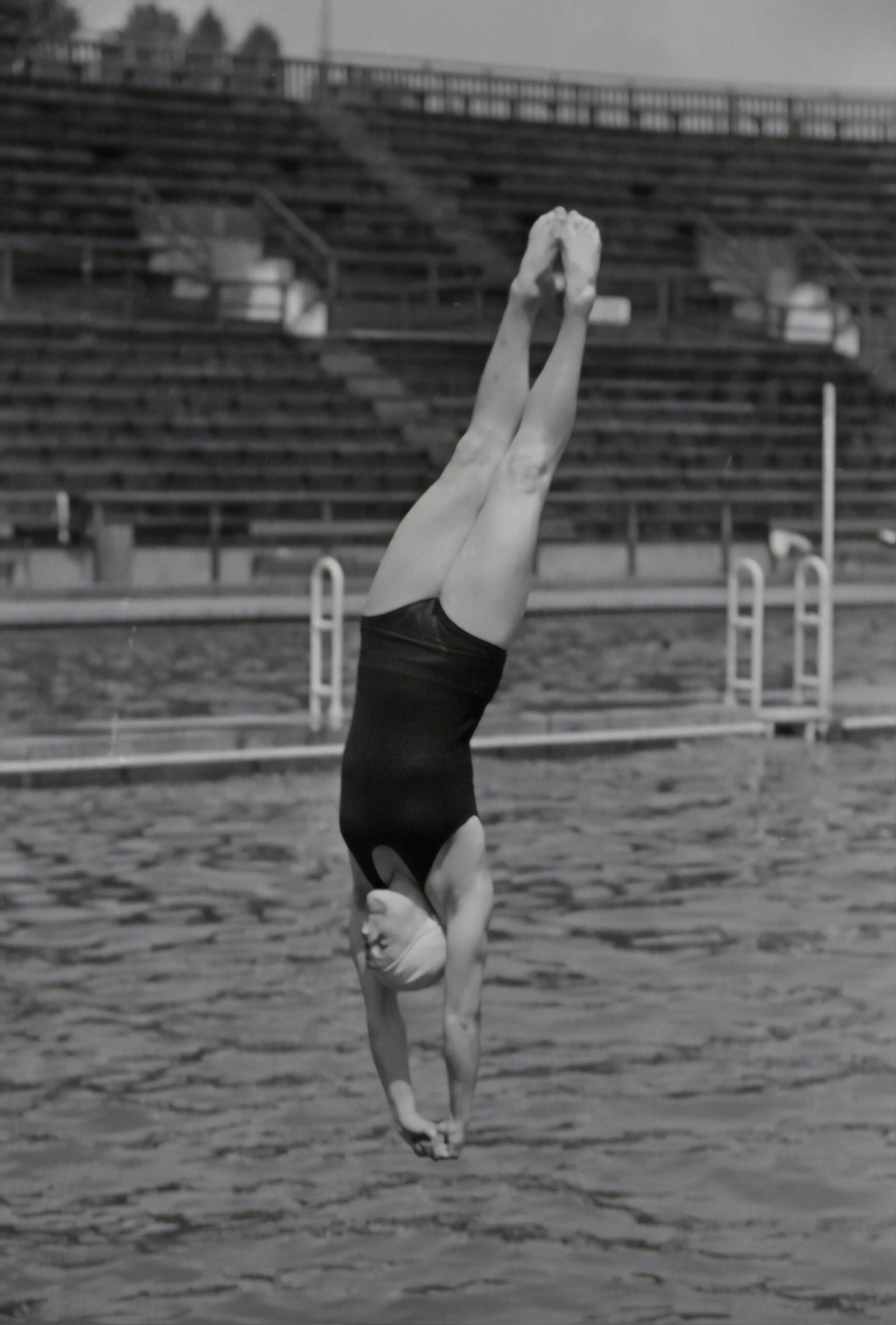
Over the years, synchronized swimming has undergone significant changes and advancements, both in terms of technique and presentation. In the early years of its inclusion in the Olympic Games, the sport was primarily focused on technical elements and precision. Swimmers would perform intricate routines that showcased their synchronized movements and precise execution of various figures and formations.
However, as the sport gained popularity and recognition, it began to evolve into a more artistic and expressive discipline. Swimmers started incorporating more dance-like movements into their routines, adding a new dimension to the sport. This shift allowed athletes to showcase their creativity, musicality, and emotional range, captivating audiences with their performances.
At the 2024 Olympic Games, we can expect to see synchronized swimming continue to push boundaries and elevate its artistic elements. With advancements in technology and choreography, swimmers will have even more opportunities to create visually stunning routines. We can anticipate the use of innovative props, lighting effects, and costumes that enhance the overall spectacle of the performances.
Furthermore, the 2024 Olympic Games will likely see an increased emphasis on storytelling and narrative in synchronized swimming routines. Swimmers will have the opportunity to convey powerful messages and themes through their movements, adding a deeper level of meaning to their performances. This shift towards storytelling will not only engage the audience on an emotional level but also provide a platform for athletes to express their individuality and make a lasting impact.
Another aspect that is expected to evolve in synchronized swimming is the inclusion of more diverse music genres. In the past, routines were often set to classical music or instrumental pieces. However, as the sport continues to evolve, we can anticipate a wider range of music choices, including contemporary pop, hip-hop, and even electronic dance music. This diversification of music will not only appeal to a broader audience but also allow swimmers to explore different styles and showcase their versatility.
In conclusion, synchronized swimming has come a long way since its introduction to the Olympic Games. From its early focus on technical precision to its current emphasis on artistic expression, the sport has continuously evolved to captivate and inspire. As we look forward to the 2024 Olympic Games, we can expect to see synchronized swimming reach new heights of creativity, innovation, and storytelling, leaving audiences in awe of the beauty and grace of this mesmerizing sport.
A Brief History of Synchronized Swimming
Synchronized swimming has its roots in water ballet, a popular form of entertainment in the late 19th and early 20th centuries. It was initially performed in theaters and music halls, showcasing the elegance and athleticism of the swimmers. In the 1930s, the sport began to take shape with the formation of synchronized swimming clubs and the establishment of rules and regulations.
Over the years, synchronized swimming has evolved both in terms of technique and artistic expression. The sport gained recognition as an official discipline in the 1950s, and made its Olympic debut as a demonstration sport in 1952. It wasn’t until 1984 that synchronized swimming became a fully recognized Olympic sport, with duet and team events.
Since its inclusion in the Olympics, synchronized swimming has continued to grow and develop. The sport has become increasingly competitive, with athletes pushing the boundaries of what is possible in terms of strength, flexibility, and synchronization. The routines have become more complex and demanding, requiring a high level of skill and precision.
In addition to the technical aspects, synchronized swimming has also become more artistic. Swimmers now incorporate elements of dance, gymnastics, and theater into their routines, creating visually stunning performances that captivate audiences. The music and costumes play an important role in setting the mood and enhancing the overall aesthetic of the performance.
Today, synchronized swimming is practiced and enjoyed by people of all ages and skill levels. It is not only a competitive sport but also a recreational activity and a form of artistic expression. Synchronized swimming clubs and teams can be found in many countries around the world, providing opportunities for individuals to learn and master the sport.
As synchronized swimming continues to evolve, it is likely that we will see even more innovation and creativity in the future. New techniques and styles will emerge, pushing the boundaries of what is considered possible in the sport. Whether it is performed in a small local pool or on the grand stage of the Olympics, synchronized swimming will continue to captivate and inspire audiences with its beauty and grace.
In addition to the changes in format and scoring, there will also be modifications to the routines performed in synchronized swimming at the 2024 Olympic Games. The traditional routines, which often featured themes and storytelling elements, will now focus more on athleticism and creativity. Swimmers will be encouraged to push the boundaries of what is possible in the water, incorporating acrobatic moves and intricate formations into their routines.
To further enhance the visual appeal of the sport, there will be advancements in technology and production. Underwater cameras and drones will capture stunning footage of the swimmers, allowing viewers to witness their graceful movements from unique angles. The use of augmented reality and projection mapping will also be explored, creating mesmerizing visual effects that will transport the audience into a world of fantasy and imagination.
Furthermore, the IOC is working closely with choreographers and music producers to create a more engaging and contemporary soundtrack for synchronized swimming. Gone are the days of classical music and traditional ballet-inspired routines. The new era of synchronized swimming will embrace a diverse range of musical genres, from pop and hip-hop to electronic and world music. This shift aims to attract a younger audience and make the sport more relatable to today’s generation.
To ensure the success of these changes, the IOC will invest in training programs and coaching initiatives for synchronized swimmers. National federations will be encouraged to develop talent from a young age, providing the necessary resources and support to nurture future champions. The goal is to elevate the level of competition in synchronized swimming and inspire athletes to reach new heights of excellence.
With these exciting changes, synchronized swimming at the 2024 Olympic Games promises to captivate audiences around the world. The sport will shed its image of being solely a graceful and elegant display and will emerge as a dynamic and thrilling spectacle. Athletes will showcase their strength, agility, and artistry, pushing the boundaries of what is possible in the water. As the countdown to the Games begins, anticipation builds for the debut of the new era of synchronized swimming.
Training and Preparation for Synchronized Swimming
Synchronized swimming requires immense strength, flexibility, and endurance. Athletes spend countless hours in the pool, perfecting their routines and mastering intricate movements. They undergo rigorous training that includes swimming drills, strength and conditioning exercises, and choreography sessions.
In addition to their physical training, synchronized swimmers also focus on their artistic expression. They work with choreographers to create routines that showcase their individuality and tell a story through movement. The combination of technical skill and artistic interpretation is what sets synchronized swimming apart from other sports.
During swimming drills, synchronized swimmers focus on perfecting their strokes and building their stamina. They perform various drills such as freestyle, backstroke, breaststroke, and butterfly, ensuring that their technique is flawless. These drills also help them develop the necessary strength and endurance to perform their routines with precision and grace.
Strength and conditioning exercises are an integral part of synchronized swimming training. Swimmers engage in a variety of exercises that target different muscle groups, including their core, arms, legs, and back. They may incorporate weightlifting, resistance training, and bodyweight exercises to build strength and improve their overall fitness level.
Choreography sessions are where the artistic aspect of synchronized swimming comes into play. Swimmers work closely with choreographers to create routines that are visually stunning and emotionally captivating. They explore different movements, formations, and patterns in the water, ensuring that their routine flows seamlessly and tells a compelling story.
Artistic expression is highly valued in synchronized swimming, and swimmers are encouraged to showcase their individuality through their routines. They may incorporate elements of dance, ballet, and gymnastics, adding a unique flair to their performances. The choreography sessions also involve practicing synchronized movements with their teammates, as the name suggests, ensuring that every swimmer is perfectly in sync with each other.
Training for synchronized swimming requires not only physical strength and artistic expression but also mental discipline. Swimmers must be able to stay focused and composed under pressure, as they perform complex routines in front of judges and a live audience. They learn to overcome challenges and setbacks, constantly pushing themselves to improve and achieve their goals.
Overall, the training and preparation for synchronized swimming are intense and demanding. Athletes dedicate themselves to honing their skills, both in the pool and out, to excel in this unique and captivating sport.
Training for the Olympic Games is a grueling process that requires dedication, discipline, and determination. Synchronized swimmers spend countless hours in the pool, perfecting their technique and mastering the intricate movements that define their sport. They work closely with coaches and choreographers to create routines that are not only visually stunning but also technically challenging.
Aside from their physical training, synchronized swimmers also focus on their mental and emotional well-being. They engage in mindfulness exercises, visualization techniques, and mental rehearsals to enhance their concentration and focus. They learn to block out distractions and stay present in the moment, which is crucial when performing under the bright lights and intense pressure of the Olympic Games.
As the Games draw nearer, synchronized swimmers participate in a series of national and international competitions to fine-tune their skills and gain valuable experience. These competitions serve as a platform for them to showcase their talent and prove themselves against the best swimmers in the world. They also provide an opportunity for the swimmers to assess their strengths and weaknesses, allowing them to make any necessary adjustments before the big event.
Leading up to the Olympic Games, synchronized swimmers also undergo rigorous physical conditioning to ensure they are in peak shape. They work with strength and conditioning coaches to improve their strength, flexibility, and endurance. This physical preparation is essential for executing the demanding routines with precision and grace.
Additionally, synchronized swimmers must carefully manage their nutrition and rest to support their training and recovery. They work with sports nutritionists to develop meal plans that provide the necessary fuel for their intense workouts and competitions. They also prioritize sleep and rest to allow their bodies to repair and recharge.
As the swimmers make their final preparations for the Olympic Games, the anticipation and excitement build. They know that they have dedicated years of their lives to this moment, and they are determined to make it count. They are ready to showcase their talent, passion, and hard work to the world and to inspire future generations of synchronized swimmers.
In addition to the excitement surrounding synchronized swimming, the 2024 Olympic Games in Paris will also showcase advancements in technology and sustainability. The organizers have made a commitment to hosting a green and environmentally-friendly event, with a focus on reducing carbon emissions and promoting renewable energy sources.
One notable feature of the 2024 Olympic Games will be the use of state-of-the-art technology to enhance the spectator experience. Virtual reality (VR) and augmented reality (AR) will be integrated into the venues, allowing fans to immerse themselves in the action like never before. Spectators will have the opportunity to view synchronized swimming routines from multiple angles and even feel like they are part of the performance.
Furthermore, the 2024 Olympic Games will embrace the concept of inclusivity and diversity. The synchronized swimming events will feature athletes from all walks of life, representing a wide range of cultures, backgrounds, and abilities. This emphasis on inclusivity will not only celebrate the diversity of the sport but also inspire future generations to participate and excel in synchronized swimming.
Another aspect that will make the 2024 Olympic Games memorable is the incorporation of local culture and traditions. Paris, known for its rich history and artistic heritage, will infuse the synchronized swimming events with elements of French culture. From the music selection to the design of the costumes, every detail will reflect the unique charm and elegance of the host city.
Moreover, the 2024 Olympic Games will provide a platform for synchronized swimming to gain even more recognition and popularity worldwide. The global audience tuning in to watch the games will be captivated by the grace and skill displayed by the synchronized swimmers. This increased exposure will not only attract new fans to the sport but also inspire young athletes to pursue their dreams of becoming synchronized swimmers.
In conclusion, the 2024 Olympic Games in Paris will be a landmark event for synchronized swimming, showcasing the sport’s evolution and pushing the boundaries of what is possible. With a focus on sustainability, technology, inclusivity, and cultural integration, these games will leave a lasting impact on the world of synchronized swimming and inspire a new generation of athletes.



